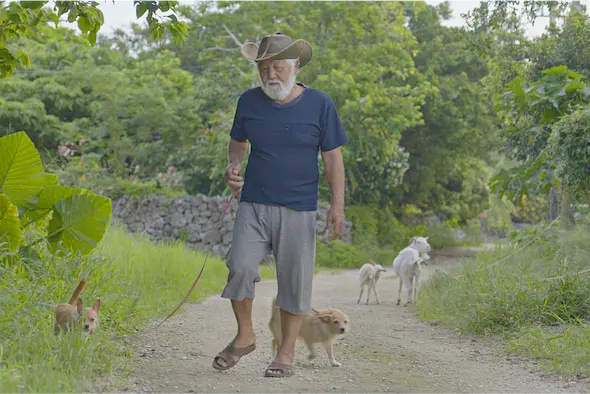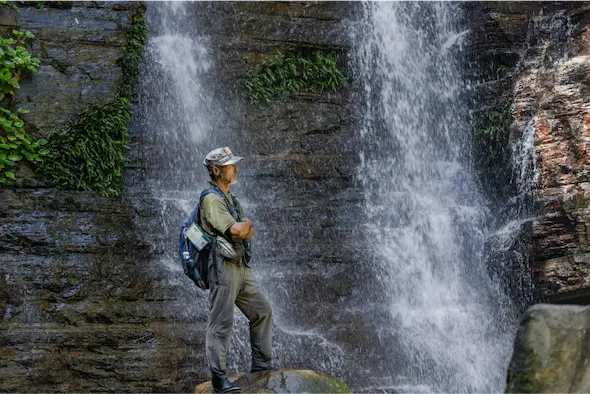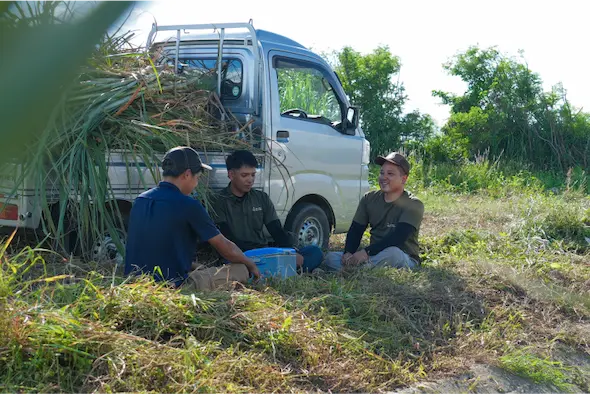Utsugumi refers to everyone working together. While it's challenging to preserve traditional events, we can make it work by helping each other with what we can.
In Taketomi, Okinawa's traditional landscape of red-tiled roofs, coral stone walls and white sandy paths remains intact. Ms Shimanaka, a traditional craftsman, also undertakes the significant role as a Kantsukasa, offering prayers to the gods during festivals. We talked to her about the spiritual culture of Taketomi, symbolised by the word Utsugumi.
Participating in festivals, passes down the "Island Identity" to the younger generations.
Taketomi has more than 20 annual events, including the biggest Tanadui Festival, the Hounen Festival and the Kitsugan Festival. During these festivals, is it very important that the children and adults of the island participate in the dedicatory performances together. These performances nurture children's hearts and strengthen their connection to the island. If these children grow up and leave the island, I'm told they remember and miss being here when the festival season comes around.In the past, when everyone worked in agriculture, it was simple to leave work all together to practice the festival performances. Nowadays, people have various jobs and lifestyles, and it is difficult for everyone to gather at once. This alone makes it more difficult to preserve island traditions. Despite the challenges, dedicatory performances are meant to be carried out with a feeling of gratitude. Before God, we must remember the spirit of Utsugumi and do our best to work together.
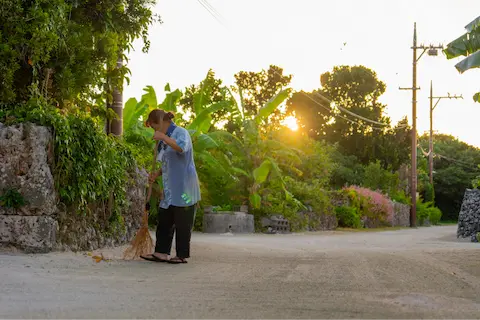
When I look back at the path I've cleaned in the morning, it feels perfect.
My title is called Kantsukasa. During festivals and events, I am entrusted with the significant role of praying for an abundant harvest and the islanders' health. There's no doubt this is a tough job, but the feeling of gratitude outweighs everything else. I feel grateful to sit before the gods as a Kantsukasa and pray for our well-being.
On Taketomi, we sweep the paths and yards in front of our houses every morning. We do it like how everyone washes their face in the morning. It feels great to look back at the path I've cleaned. I feel a sense of purification. I've been doing this every day since I was little. I was not allowed to go to school until I was done sweeping, and I raised my children the same way. They acutally enjoyed this daily ritual, making up games of what they would draw in the sand that day. While sweeping, we can pick the weeds and even out any bumps, both in the path and our minds.
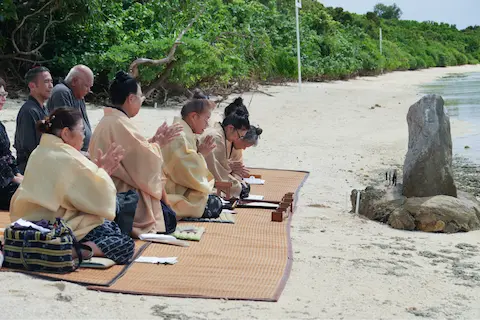
The spirit of Utsugumi brings us together, for those things we can't do alone.
It's not easy to preserve this scenery, with its red-tiled roofs, coral stone walls and white sandy paths. During typhoons, old houses are prone to damage, and the stone masonry can collapse with heavy rain. Still, during such times, everyone works together to fix things quickly. That's the spirit of Utsugumi. This word was left to us by the most venerable figure of Taketomi, Mr. Nishitou, signifying the importance of cooperation. In the past, when someone couldn't build a house alone, everyone pitched in, in their own way. That's the "Utsugumi Spirit" of Taketomi Island.
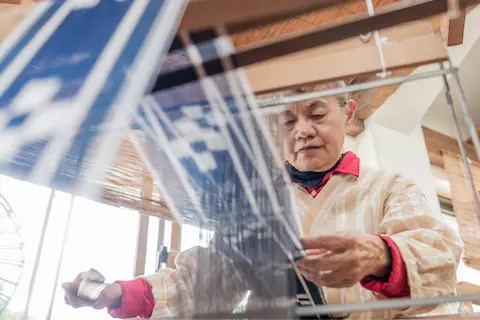
I also want to preserve traditional weaving styles, such as those seen on the Minsah obi.
These days, there are very few people who weave on the island. In the past, when you walked along the village streets, you could hear the sound of looms coming from everywhere. I grew up in a home where my grandmother spun yarn, and my mother wove on a loom. When I started to have time to myself during the midst of motherhood, I was naturally drawn to dyeing and weaving. Bashoh (Japanese banana) and Choma (hemp), which are used to make thread, were found in our backyards, and Fukugi (evergreen tree) and Yaeyama indigo, which are used to make the dye, are still abundant on the island.
Minsah is a well known craft originating from Taketomi Island. It is an Indigo Obi given to a man by a woman when they get engaged. The original Indigo Obi required a time-consuming weaving process. It's much easier to make it with a contemporary weaving loom. However, I would like to preserve the traditional weaving method as it produces unique characteristics to the obi.
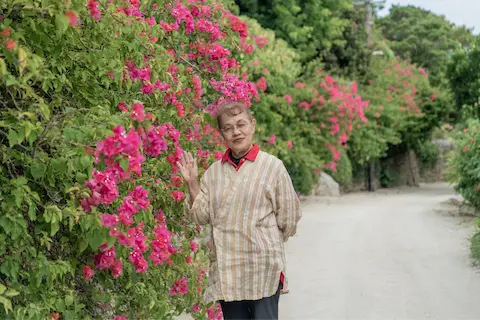
また おーりとぅらなら👋
"Mataōritouranara👋"
Please come again! in Taketomi dialect.
What is most precious to you?
What is most precious to the islanders?
